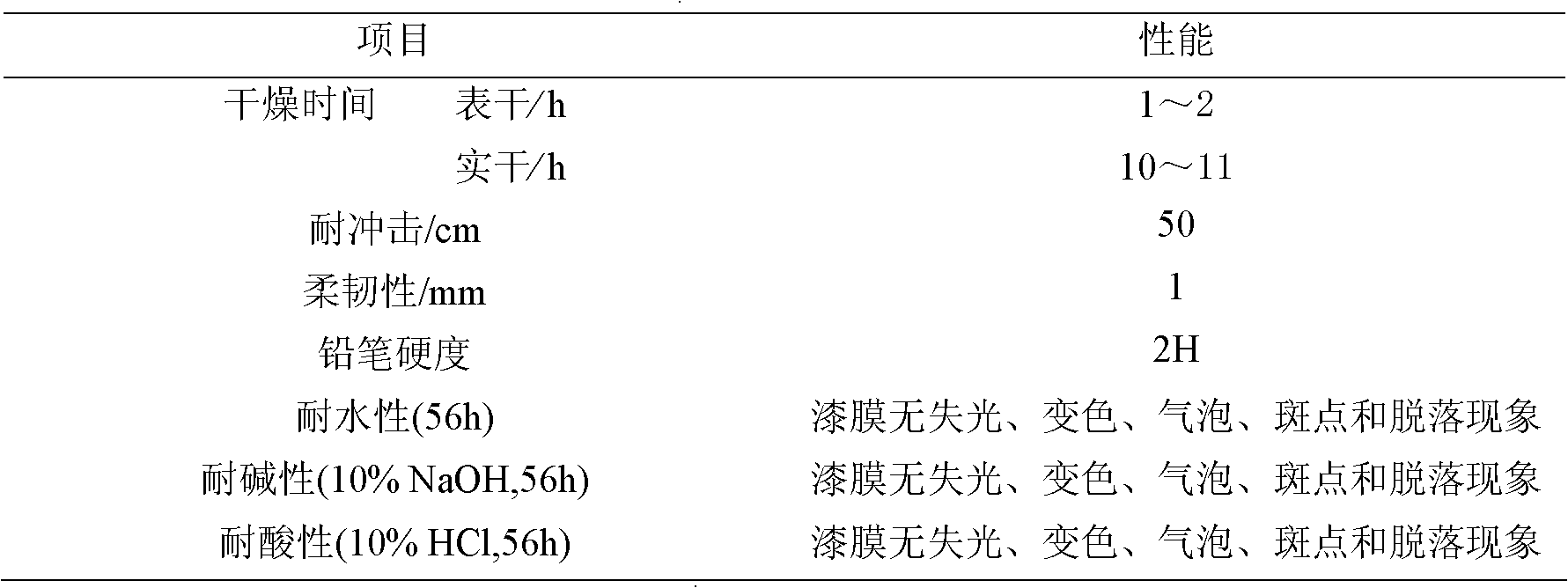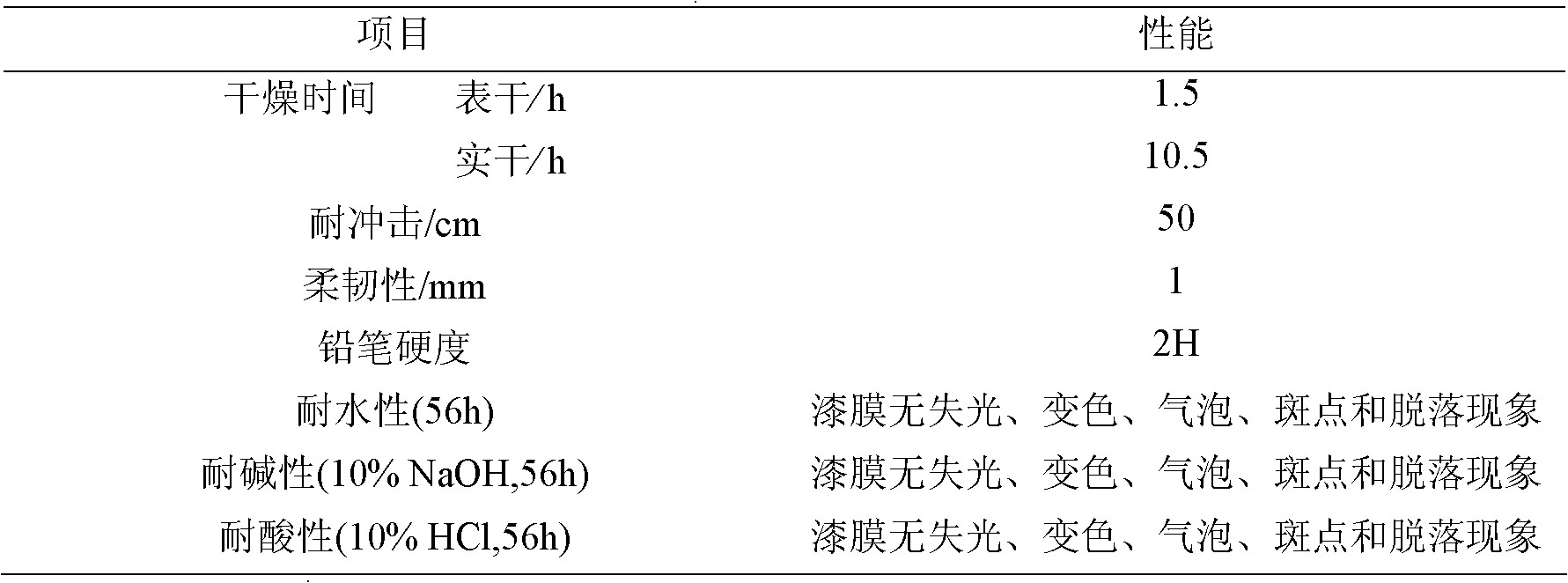Preparation method and application of waterborne polyurea modified epoxy emulsion curing agent
A water-based epoxy resin curing technology, applied in the chemical industry, can solve the problems that it is difficult to achieve the mechanical properties of solvent-based epoxy, chemical corrosion resistance, uneven distribution of resin and curing agent, and the paint film cannot form a network structure, etc. , to achieve the effect of high strength, low cost and superior water resistance
- Summary
- Abstract
- Description
- Claims
- Application Information
AI Technical Summary
Problems solved by technology
Method used
Image
Examples
Embodiment 1
[0027] 1. Synthesis of polyurea: First add 30g of D2000 to a 250mI four-neck flask equipped with a stirrer, electric heating mantle, condenser and thermometer, stir and slowly add 3.5g of TDI dropwise, react for 5min to obtain polyurea.
[0028] 2. Synthesis of prepolymer: raise the temperature of the above product to 60°C, slowly add 3.4g of E-44 and 0.17g of aqueous diethanolamine dropwise, and react for 2 hours to obtain a prepolymer.
[0029] 3. Synthesis of end-capped products: Add 10.3g of diethylenetriamine to a 250mI four-neck flask equipped with a stirrer, electric heating mantle, condenser tube and thermometer and raise the temperature to 60°C, slowly add 20g of epoxy 501 dropwise, and react for 1.5h A capped product was obtained.
[0030] 4. Synthesis of the addition product: 30.3 g of prepolymer was added dropwise to the above-mentioned capped product, and the temperature was 60° C., and the reaction was carried out for 1.5 h to obtain the addition product.
[003...
Embodiment 2
[0038] 1. Synthesis of polyurea: First add 30g of D2000 to a 250mI four-necked flask equipped with a stirrer, electric heating mantle, condenser and thermometer, stir and slowly add 5.2g of MDI dropwise, react for 30min to obtain polyurea.
[0039] 2. Synthesis of prepolymer: heat the above product to 80°C, slowly add 2.3g of E-44 dropwise, and 0.11g of aqueous glycine, and react for 4 hours to obtain a prepolymer.
[0040] 3. Synthesis of end-capped products: Add 10.3g of diethylenetriamine to a 250mI four-necked flask equipped with a stirrer, electric heating mantle, condenser tube and thermometer and raise the temperature to 80°C, slowly add 20g of epoxy 501 dropwise, and react for 2.5h A capped product was obtained.
[0041] 4. Synthesis of the addition product: 15.1 g of prepolymer was added dropwise to the above-mentioned end-capped product, and the temperature was 90° C., and the reaction was carried out for 2.5 hours to obtain the addition product.
[0042] 5. Water-b...
Embodiment 3
[0049] 1. Synthesis of polyurea: First add 30g of D2000 to a 250mI four-neck flask equipped with a stirrer, electric heating mantle, condenser and thermometer, stir and slowly add 1.7g of HDI dropwise, and react for 10min to obtain polyurea.
[0050] 2. Synthesis of prepolymer: heat the above product to 70°C, slowly add 3.4g of E-44 and 0.11g of aqueous diethanolamine dropwise, and react for 3 hours to obtain a prepolymer.
[0051] 3. Synthesis of end-capped products: Add 10.3g of diethylenetriamine to a 250mI four-neck flask equipped with a stirrer, electric heating mantle, condenser and thermometer and raise the temperature to 70°C, slowly add 20g of epoxy 501 dropwise, and react for 2h to obtain capped product.
[0052] 4. Synthesis of the addition product: Add 20 g of prepolymer dropwise to the above-mentioned end-capped product, and react for 2 hours at a temperature of 70° C. to obtain the addition product.
[0053] 5. Water-based polyurea modified epoxy resin curing ag...
PUM
 Login to View More
Login to View More Abstract
Description
Claims
Application Information
 Login to View More
Login to View More - R&D
- Intellectual Property
- Life Sciences
- Materials
- Tech Scout
- Unparalleled Data Quality
- Higher Quality Content
- 60% Fewer Hallucinations
Browse by: Latest US Patents, China's latest patents, Technical Efficacy Thesaurus, Application Domain, Technology Topic, Popular Technical Reports.
© 2025 PatSnap. All rights reserved.Legal|Privacy policy|Modern Slavery Act Transparency Statement|Sitemap|About US| Contact US: help@patsnap.com



